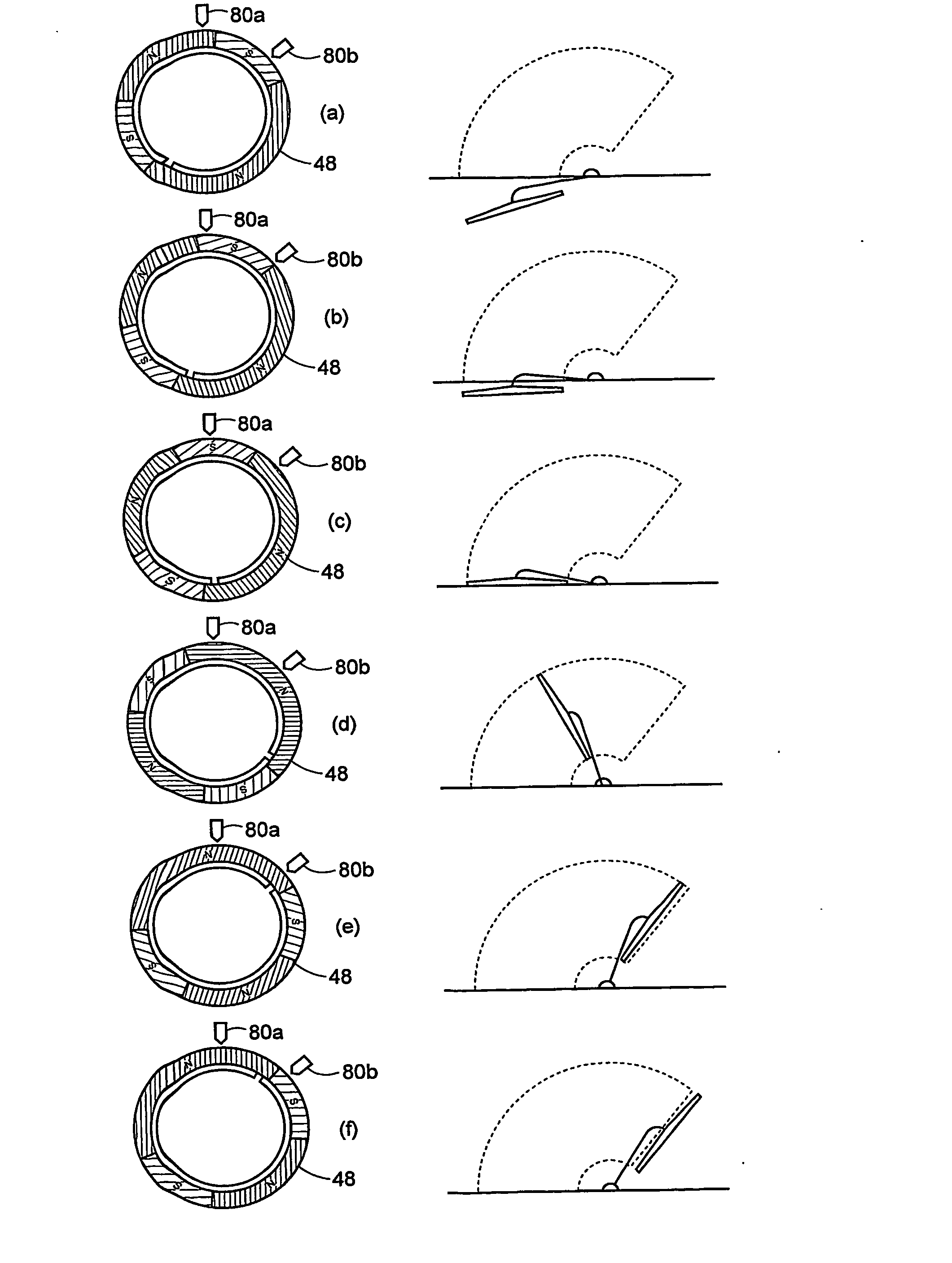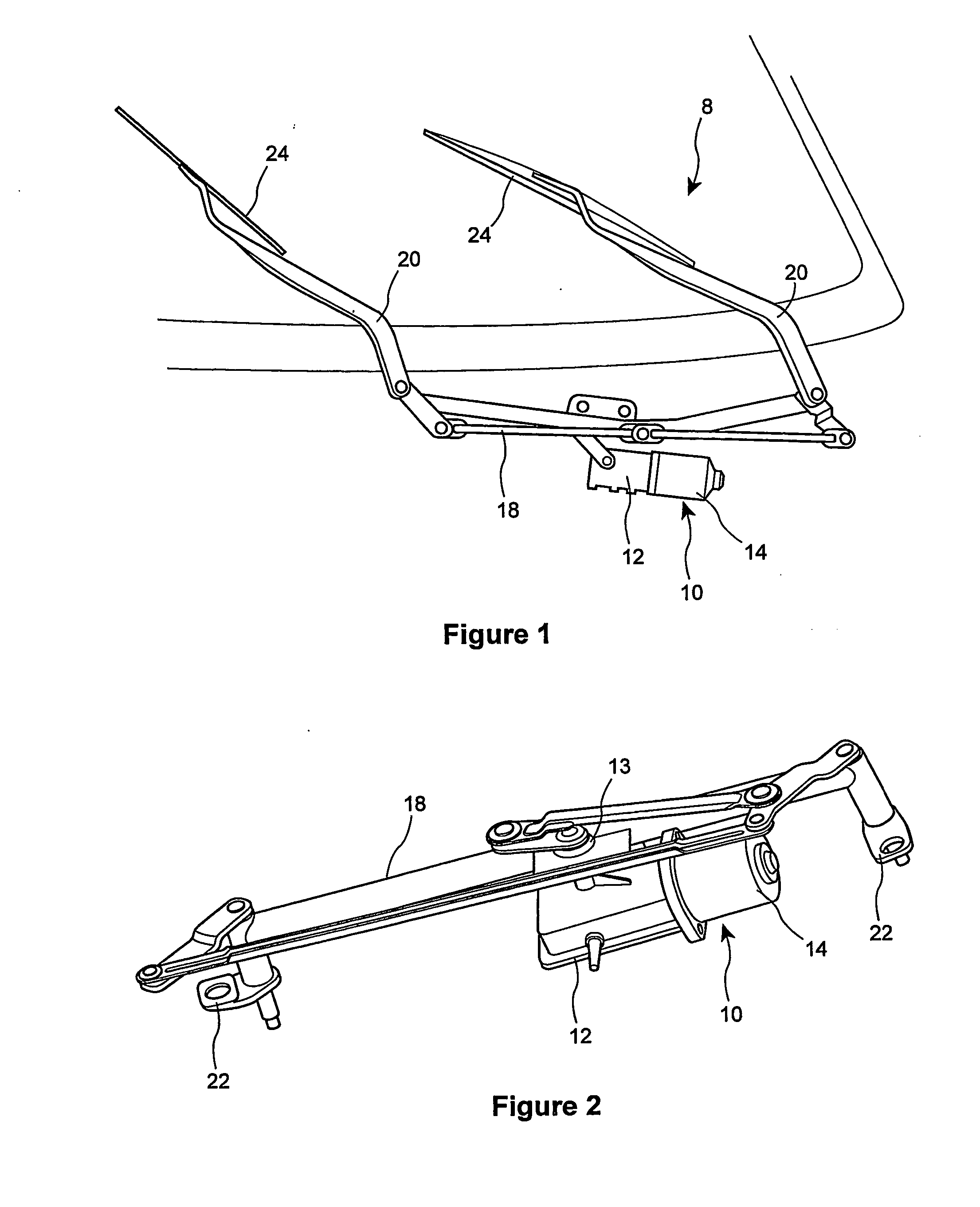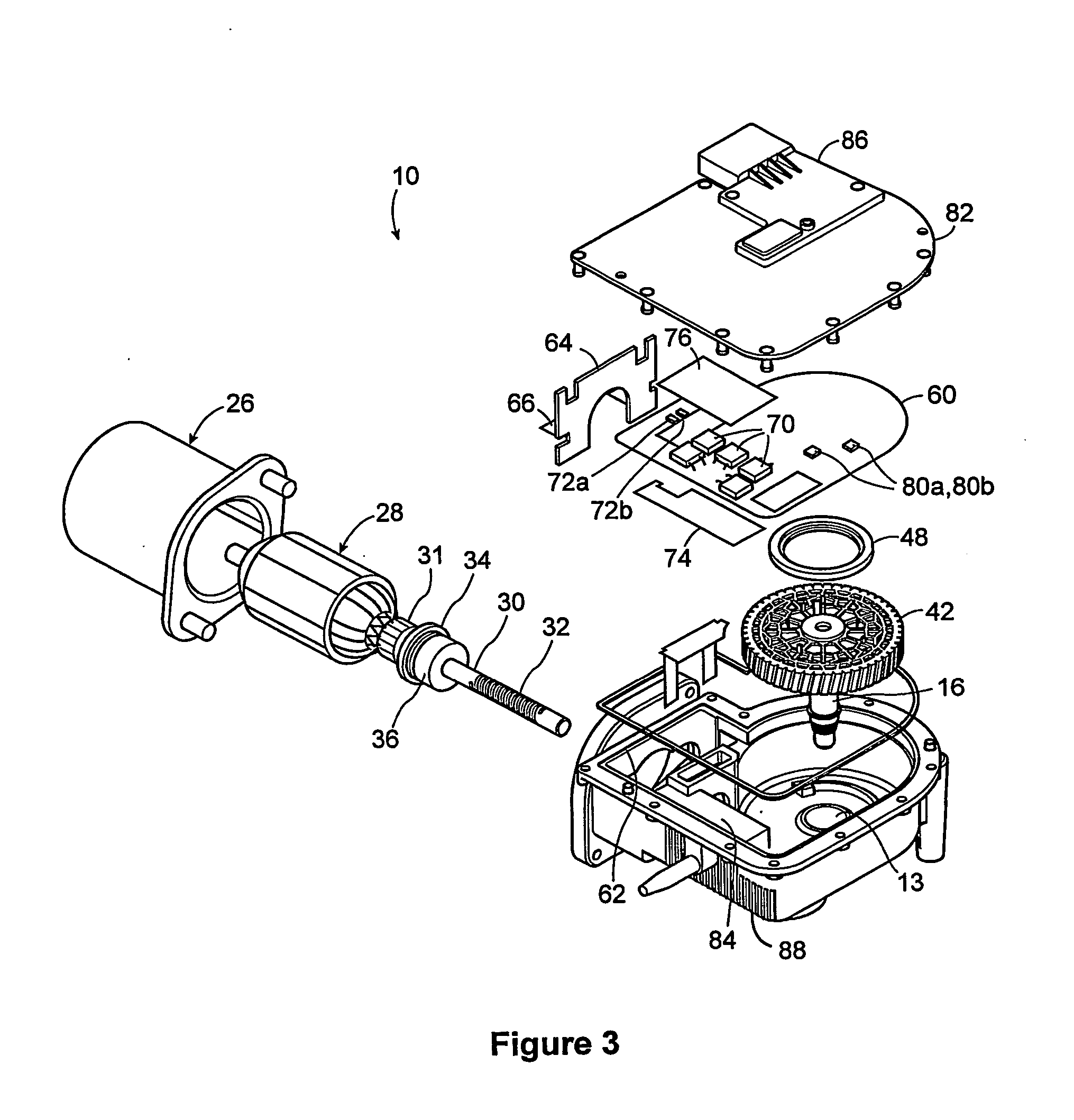Reversing motor windshield wiper system
- Summary
- Abstract
- Description
- Claims
- Application Information
AI Technical Summary
Benefits of technology
Problems solved by technology
Method used
Image
Examples
Embodiment Construction
[0033]FIGS. 1 and 2 show a reversing-motor windshield wiper system 8 including a wiper power unit 10 constructed according to the preferred embodiment. The power unit 10 comprises a drive motor 14 connected to a gearbox housing 12. Referring additionally to the exploded view of the power unit 10 in FIG. 3, the housing 12 includes an outlet 13 for an output shaft 16 which drives a linkage 18 onto which two wiper arms 20 are mounted (at mounts 22). The linkage 18 drives the two wiper arms 20 (FIG. 1), each of which carries a wiper blade 24. The invention may employ conventional linkage mechanisms as known in the art per se. As described in greater detail below, the motor 14 is controlled to rotate in different angular directions in order to oscillate the wiper arms 20 across the windshield.
[0034] As shown in FIG. 3, the motor 14 comprises a stator 26 and a rotor 28, which is shown in isolation in FIG. 4. The constructional details of the motor 14 are not important to the invention an...
PUM
 Login to View More
Login to View More Abstract
Description
Claims
Application Information
 Login to View More
Login to View More - R&D
- Intellectual Property
- Life Sciences
- Materials
- Tech Scout
- Unparalleled Data Quality
- Higher Quality Content
- 60% Fewer Hallucinations
Browse by: Latest US Patents, China's latest patents, Technical Efficacy Thesaurus, Application Domain, Technology Topic, Popular Technical Reports.
© 2025 PatSnap. All rights reserved.Legal|Privacy policy|Modern Slavery Act Transparency Statement|Sitemap|About US| Contact US: help@patsnap.com



